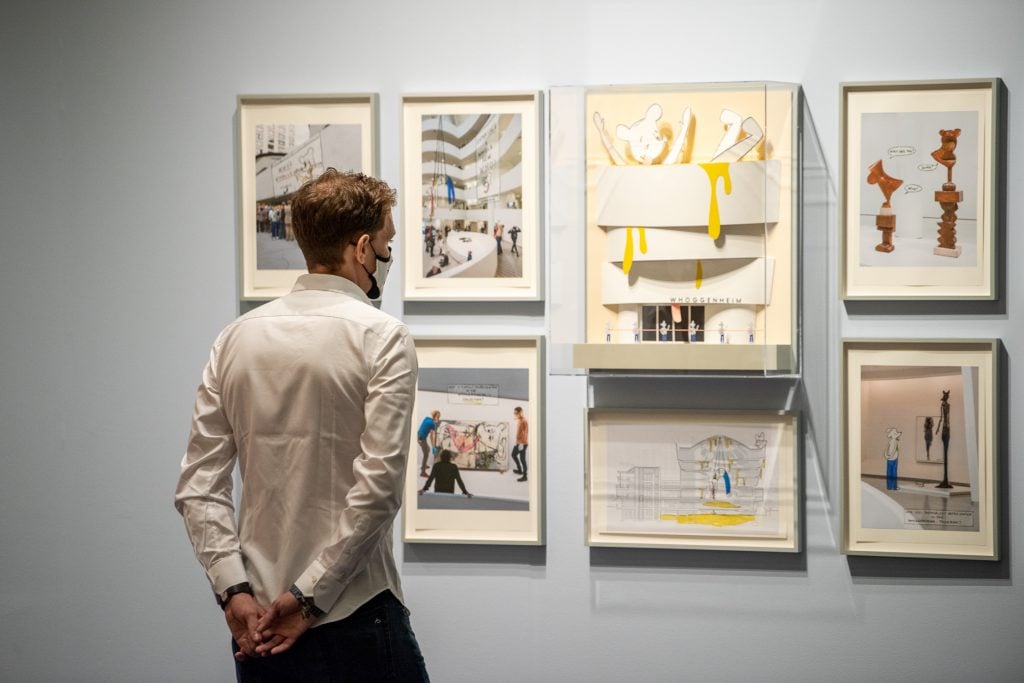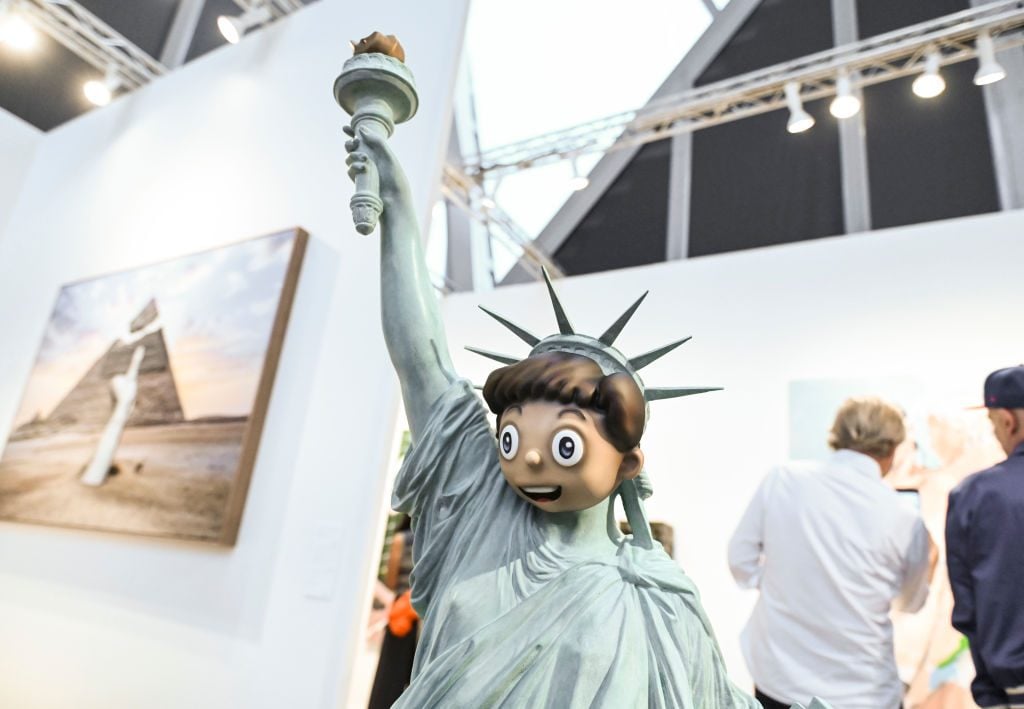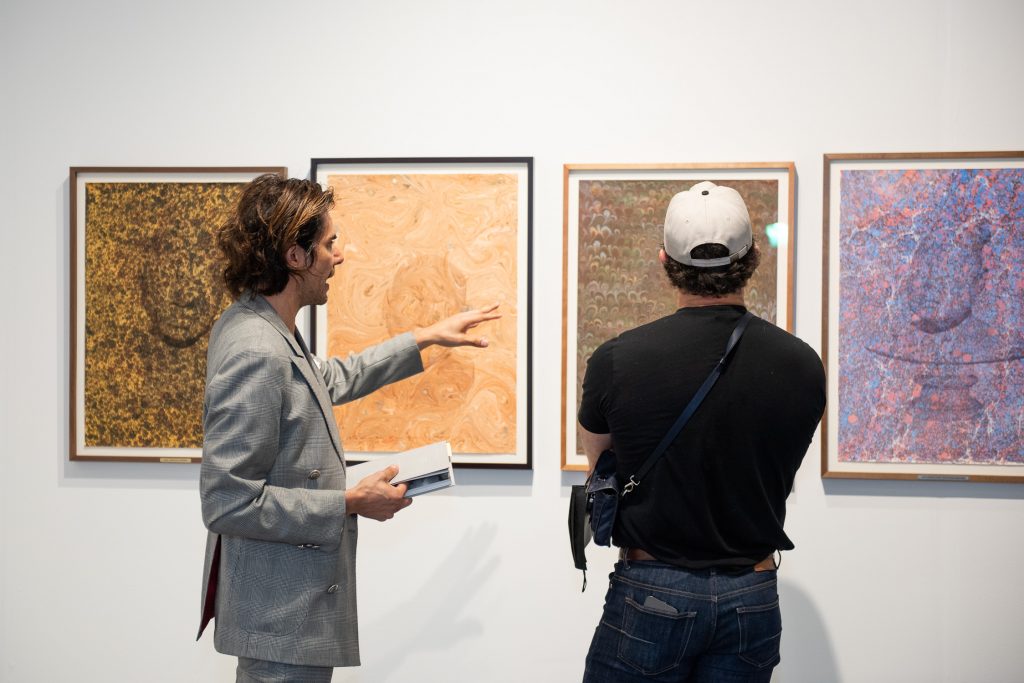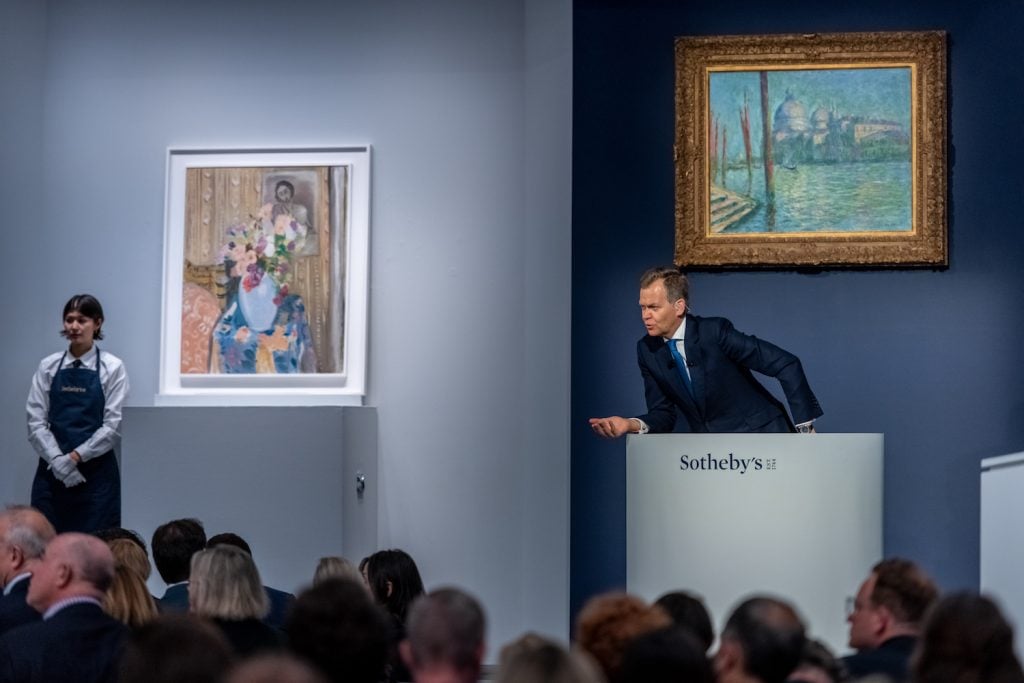The Hammer
Simon de Pury on Frieze Week’s Return of the Art-Market Status Quo, and Why Nothing Beats the Thrill of the Auction Room
Despite the persuasive powers of private dealer’s mind games, public competition never fails to drive up prices.

Despite the persuasive powers of private dealer’s mind games, public competition never fails to drive up prices.

Simon de Pury

Every month in The Hammer, art-industry veteran Simon de Pury lifts the curtain on his life as the ultimate art-world insider, his brushes with celebrity, and his invaluable insight into the inner workings of the art market.
New York is back big time. I just spent an exciting week in the buzzing big apple. In some ways it feels as if Covid never happened, as if the wars were far away, and as if the stock market wasn’t going through a severe drop.
Some things nevertheless remind you of the pandemic: visiting Frieze, guards give the impression of being there more to police the visitors who don’t wear masks than to protect the artworks. On your iPhone, Uber will only confirm your ride once you tick the box confirming that you are wearing a mask. The street extensions of most restaurants are luckily still in place, and are hopefully here to stay. It adds a whiff of Paris to the electricity of Manhattan. You can’t get a restaurant booking nearly anywhere unless you book days ahead, which I hate to do as it takes away all spontaneity.
During the height of Covid, the seasonality of the art market disappeared. It is mostly back, with the exception that Christie’s had its big sales one week before the auctions of Sotheby’s and Phillips, and before the Frieze art fair. European collectors came back to New York in person and in force. With the prices of hotels having sometimes trebled since pre-pandemic levels, most of the visitors from overseas had to choose which week to come. New York’s main museums and institutions as well as the leading commercial galleries all put up top shows. The glorious spring weather only added to the pleasure of getting back to the physicality of enjoying art and mingling with friends and colleagues.

Artwork during 2022 Frieze New York on May 18, 2022 in New York City. Photo by Daniel Zuchnik/Getty Images.
It also feels as if the return to pre-Covid art market normality has eliminated all great intentions of innovating and transforming the way the art market functions. The art world was always very adept at defending the status quo and resisting change. In the early days of the lockdown, we felt that once it was all over (which incidentally we don’t really know that it is) things would never be the same again. First, we would be traveling far less, and secondly, we would have completely changed the existing business models. Not much of that is happening. In a way it is understandable. In our own personal lives, we decide to make profound changes when we experience big turbulence. However, the minute we have surmounted these we tend to return to our old ways. I guess it’s human nature.
By far the most buoyant part of the two weeks of auctions was the heated competition for the works of emerging artists who in some cases were totally unknown eighteen months ago, and for whom prices were sometimes achieved at well over ten times what was originally asked for on the primary market. The main financial beneficiaries of these steep increases are the so-called “serious” collectors that were initially chosen by the galleries to be worthy of owning these works, and the auction houses selling them. It happens to the detriment of the artists themselves and to the dealers who are championing their work. Prices going up too fast make it very difficult for the artists to sustain that level over more than one or two auction seasons. Most artists whose price levels at public auctions have dipped after an initial feverish price explosion never get back to these initial levels. The best ones of course outlive such dips, and their second comings are much stronger, but they are the exception.

Guests at Frieze New York 2022.
Collecting would seem to be all about choosing and selecting the works that you fall in love with. In reality, it is all about being chosen and selected by the gallery who decides which works you can get (if any at all). Making inquiries about the prices and availability of some works within the early hours of Frieze only fortifies this impression. When an exhibition of let’s say 15 new works of a hot new artist takes place and they are all of the same size, the asking price will be the same for all of them. In reality however there will be two to three works that are much better than all the others, and that every collector will want. It is the gallery in that case who decides to whom they sell the most desirable work. It is understandable, then, that at an auction you will be prepared to pay a much higher price because you are the one who chooses the work that you want. The fact of competing in real time against several competitors during the auction makes you pay the ‘real’ price for a work at that particular moment.
When a dealer offers you a work privately on the secondary market and you ask for justification of the asking price, references will be made to similar works that were sold publicly in the recent past. The feeling of competition is less palpable than in an auction and there isn’t the pressure of the gavel about to come down that forces you to decide in a split-second whether to go on bidding or not. I remember offering, way back, a fabulous Cézanne still-life to a mega-collector. I knew it was exactly what he was looking for. When I articulated to him the price that the vendor wanted for it, he told me it was ridiculous and far too high. I therefore didn’t manage to sell it so the owner decided to consign it to one of the main auction houses. When the lot came up there was spirited bidding by several interested parties. “My” collector was bidding on the phone, and the price rapidly rose way above the price at which I had offered it to him. He hung in there until he emerged victorious from the auction battle. Far from being upset at having had to pay so much more, I know that if he had bought it in a private transaction from me, he would not have experienced the same degree of satisfaction.

Sotheby’s evening sale of Modern art in New York on May 17, 2022. Image courtesy Sotheby’s.
Being active both as a dealer and as an auctioneer I ultimately prefer auctions. As an auctioneer I feel I can obtain the highest possible price at any given moment regardless of whether I personally love the work or not. As a dealer, I am incapable of selling a painting that I am not enamored with. As a buyer on the primary market, it will at times be a challenge to be chosen by the selling gallery, and as a purchaser on the secondary market I may very easily react exactly the same way as the major collector and purchaser of the Cézanne still life did when I offered it to him privately. The different psychologies at play in private transactions and auctions never cease to fascinate me.
While there is at times ferocious competition between the galleries, dealers, and art fairs on one side, and the main auction houses on the other, both sides very much need each other. Galleries can’t be truly successful if there isn’t an auction market for what they sell and vice versa, auctions do need the active participation and safety net provided by the galleries. The success of the one side feeds the success of the other.
Simon de Pury is the former chairman and chief auctioneer of Phillips de Pury & Company, former Europe chairman and chief auctioneer of Sotheby’s, and former curator of the Thyssen-Bornemisza Collection. He is now an auctioneer, curator, private dealer, art advisor, photographer and DJ. Instagram: @simondepury